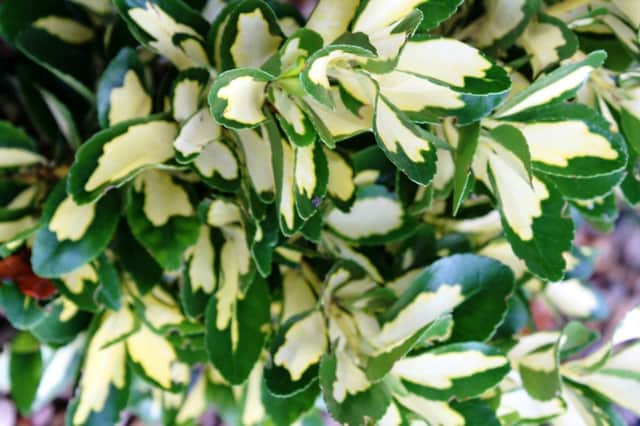Turn over a new leaf


But if you are prepared to have mainly foliage-inspired plantings, then the list suddenly expands, and as there are few gardens perfectly positioned to make the most of our meagre allotment of sunshine, that list should be scoured and memorised and put to good use.
So for those dark and sometimes dispiriting spots facing north and west or shadowed by a neighbour’s Leylandii hedge, consider the likes of Elaeagnus, which are grown for their leaves rather than for their tiny white flowers.
Advertisement
Hide AdAdvertisement
Hide AdE pungens “Maculata” is a hardy evergreen with yellow-splashed foliage, while E ebbingei has the added attraction of having downy leaves. Both come with the extra benefit of being hardy beasts requiring little care or attention. They can be trained (to a degree), pruned relatively easily and propagated without too much trouble.
Lonicera nitida (preferably “Baggesen’s Gold”) is another sunny-foliaged shrub, easily grown, easily pruned and very hardy. It’s a shrubby honeysuckle that takes on a purplish hue in winter.
Skimmia japonica is an old favourite with lovely dark foliage and rich red berries that tend to stay intact throughout winter. It does best in acidic soil so if in doubt, plant it in a container filled with the right compost.
Box (Buxus) is always welcome, as is one of the finest flowering shrubs for a shady site – the camellia, which, like S japonica, likes an acidic soil.
Advertisement
Hide AdAdvertisement
Hide AdThen there’s the truly lovely Viburnum davidii, which produces blue berries, and V tinus (pink buds followed by small white flowers) and various mahonias (mainly yellow flowers and holly-like leaves).
And to keep down any troublesome weeds that seem capable of thriving in the shade, try Epimedium x perralchicum. While most evergreen epimediums are good in dry shade, this one makes a dense clump of rather tough, leathery leaves split into three or five wavy-edged leaflets.
In spring, sprays of petite pale yellow flowers dance over the foliage. It’s a great weed-smothering hardy perennial proving year-round interest. Alternatively, try the variegated form of Vinca minor, a splendid low-growing weed-beater.